#ancient religion
Text
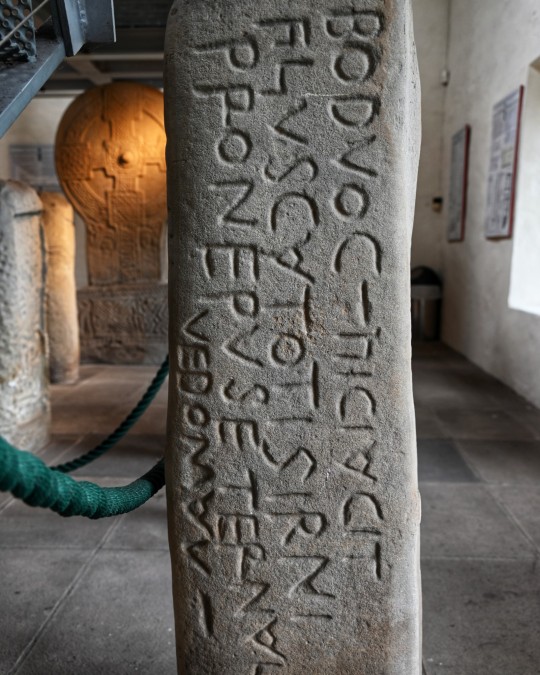
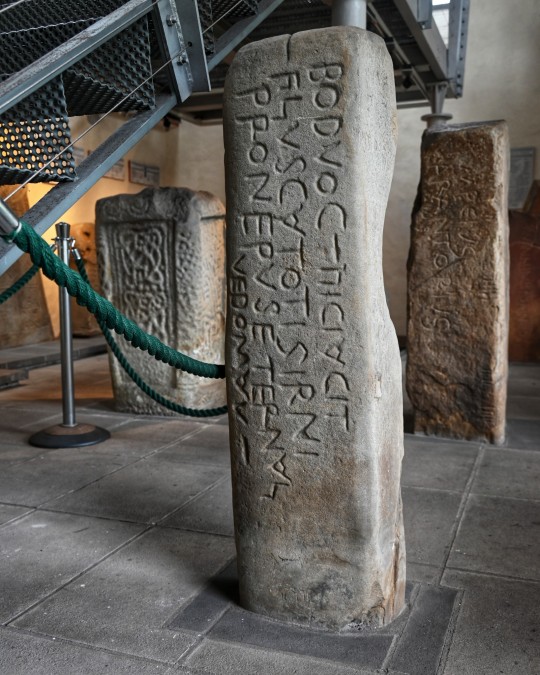

'The Bodvoc Stone' 6th Century CE Inscription Stone, Margam Stones Museum, nr. Port Talbot, Wales
#sacred stones#ancient religion#early belief#stonework#carved stone#relic#artefact#wales#margam stones#archaeology#ancient culture#ancient craft
543 notes
·
View notes
Text

Part of a relief portraying goddess Isis, a hellenized version of an ancient Egyptian goddess Eset. After Romans turned Egypt into a province, the cult of Isis spread all over the Roman Empire and reached its peak during the second century.
#ancient rome#roman empire#ancient history#ancient culture#ancient egypt#isis#goddess isis#ancient religion
64 notes
·
View notes
Text
Time Travel Question 22: Ancient History X and Earlier
These Questions are the result of suggestions from the previous iteration.
This category may include suggestions made too late to fall into the correct grouping.
Please add new suggestions below if you have them for future consideration. All cultures and time periods welcome.
#Crinoids#Time Travel#Paleozoic#Proto-Indoeuropean#Ancient Religion#Neolithic#The Land of Punt#Ancient World#Linguistics#Early Humans#Tocharian#Indo-European#Yuezhi#Chinese History#Tarim Basin#Steppe Nomads#The Bronze Age#Cretaceous#Pharaoh Hatshepsut#Ancient Egypt#Wu Zetian#Minoans
130 notes
·
View notes
Text
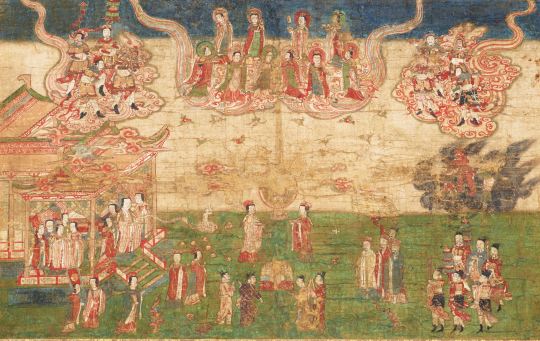
Depiction by an unknown Chinese artist of the birth of Mani (216-274 CE), founder of Manichaeism, a dualistic religion that portrays existence as a struggle between kingdoms of light and darkness. From its origins in present-day Iraq, Manichaeism spread westward into the Roman Empire (where it temporarily won over Augustine of Hippo before his conversion to Catholicism) and eastward into Asia. Though it died out in the West following intense persecution by the Christian Roman emperors, it is thought to have persisted in some parts of China into the 20th century, and perhaps still today.
Colors on silk, 35.6x56.9 cm (=14x22.4 in). 14th century (late Yuan or early Ming Dynasty). Now in the Kyushu National Museum, Dazaifu, Fukuoka Prefecture, Japan.
#art#art history#Asian art#China#Chinese art#Imperial China#Mani#Manichaeism#14th century art#Kyushu National Museum#religion#ancient religion#ancient history
45 notes
·
View notes
Text
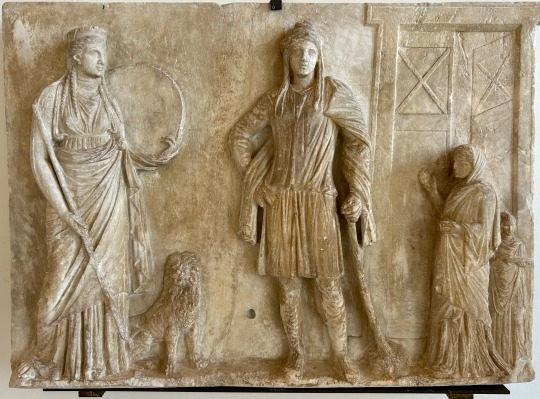
Votive Relief to Cybele and Attis from Asia Minor, 2nd Century BCE.
Museo Correr, Venice.
198 notes
·
View notes
Quote
While the link between Hestia and Demeter is immediately obvious, that between Hestia and Hermes may seem surprising at first. What they share is a role as intermediaries. The smoke from the hearth’s altar, where the sacrifices burn, provides, like Hermes, a means of communication between the realm of mortals and Olympus.
Erika Simon, The Gods of the Greeks
#erika simon#the gods of the greeks#hestia#hermes#hearth#ancient greece#ancient religion#hellenic deities#demeter#smoke#prayers#offerings#quotes
156 notes
·
View notes
Text
Bronze Age Libation Vessel from Crete, c. 1600-1450 BCE: the body of this 3,600-year-old vessel was carved from a single block of rock crystal

The collar of this libation vessel is decorated with discs of gilded ivory, while the handle is formed by a length of bronze wire and fourteen beads made of rock crystal. The vessel itself is about 16.5cm tall (roughly 6.5 inches) when measured from the base up to the rim.
Libation vessels such as this were widely used to pour ritual offerings, such as wine (or other alcoholic substances), water, honey, olive oil, milk, or grain, usually in honor of a deity or in remembrance of the dead. These ritual vessels are also known as rhyta (or the singular rhyton). They were especially common among ancient cultures, but have also been used by many other peoples throughout history, and similar libation vessels are still used within certain religious/cultural traditions today.
This particular vessel was crafted and used by the Minoans -- a Bronze Age civilization that once flourished on the island of Crete. It was unearthed from the ruins of the Central Palace of Zakros.
According to The Heraklion Archaeological Museum:
This small libation vessel, a true masterpiece of Minoan art, is one of the most valuable ritual vessels of the Central Sanctuary of Zakros. The body and neck are made separately. The body of the rhyton is carved from a particularly large block of rock crystal. The vase was found shattered into hundreds of tiny pieces, which were restored with marvellous skill by the conservators of the Heraklion Archaeological Museum. The collar around the join between neck and body is decorated with gilded ivory discs. The tall, curved handle is formed of fourteen crystal beads threaded on bronze wire and was found almost intact during the excavation, with the beads still in place.
The skill of the Minoan craftsman is evident not only from the decorative details of the rhyton but also from the fact that he was able to create such a fine-walled vessel without cracking the particularly hard raw material. The aesthetic perfection of the rhyton is as impressive as the technical skill required to produce it. Its symbolic value as a ritual vessel is heightened by the precious ivory and the metals, all of which were imported to Crete from distant parts of the East Mediterranean.
Sources & More Info:
Heraklion Archaeological Museum: Rock Crystal Libation Vessel/Rhyton
World History Encyclopedia: Minoan Rock-Crystal Vase
Minoan Crete: Zakros
#archaeology#history#artifact#ancient history#art#bronze age#minoan#crete#greece#europe#rhyton#ritual artifact#religious art#ancient religion#rock crystal#ancient art#crafting#crystals#stonework#ritual
47 notes
·
View notes
Text
The most famous Temple of Aphrodite was in Corinth. This center of worship was known for its sacred prostitutes who acted as priestesses of the goddess, invoking Aphrodite’s blessings and ensuring fertility, love, and prosperity for the worshipers.
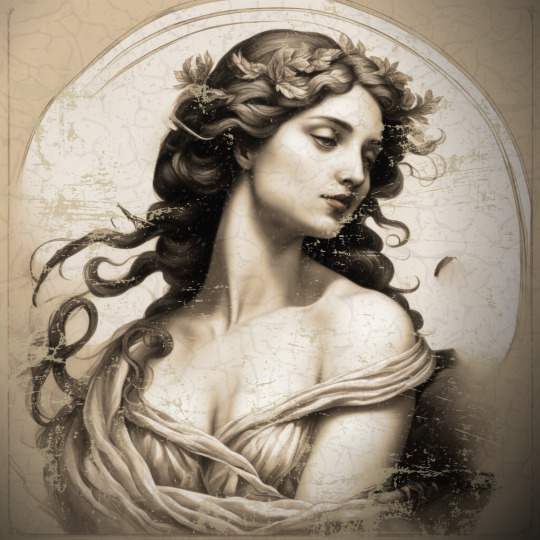
#aphrodite#aphrodite deity#aphrodite devotee#goddess of love#goddess of beauty#greek gods#ancient religion#ancient greek mythology#ancient history#theoi#the illiad#homers odyssey#hellenic deities#hellenic pagan
52 notes
·
View notes
Text
Notes on Anitismo - The Ancient Religion of the Philippines by Isabelo de los Reyes.

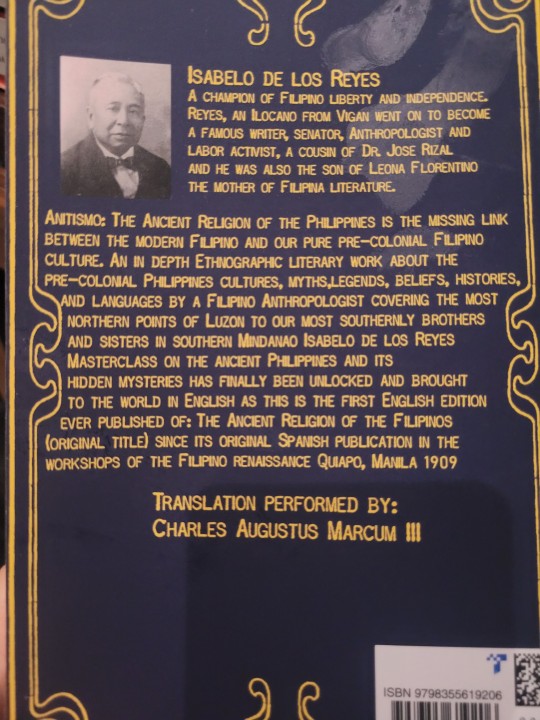
Keep in mind - this was written a while back.
Ancient Chronicles written by the Jesuit hispanic Friars state that at the that the first spaniards set foot in the Philippines from the coast of visayas to Manila there was a considerable population of Muslim converts
This was especially true for Mindanao due to conversion by Islamic teachers from Borneo
De los Reyes argues that because of this, to find native Filipino religion at its purest, we must look to the North
Distinguishing native religion without outside influence such as from Islam, Hinduism, Christianity etc can be tricky
However he argues that the traces of Native Filipino religion can be found in the stories superstitions and advice that belong to various Filipino ethnic groups (Tagalogs, Bicolanos, Zambalenos etc)
From the South of the country in Mindanao to the extreme North like Luzon, De los Reyes argues then native Filipino religion was consistent
This religion was Anitism or the Cult of Anito, meaning souls of the ancestors.
Anitism is not a monolithic religion and hosts a broad pantheon ranging from Gods to animals, nature, elements and space.
The Philippines had its own modern spiritism and De los Reyes argues this may have been the origins of the cults of "Romanist Saints" (Catholic saints) in the Philippines. By this I think he means that Filipino spirituality influenced how Filipinos proceeded with Catholic worship.
The oldest chronicles about the Philippines can be found in various museums and libraries (such as the National Library of Madrid, Covenant of St Augustine in Manila)
We can follow these chronicles, from when the Jesuit Pedro Quirino provided news of religion in the Philippines in 1604, followed by reproductions by others like the Jesuit Colin in 1663 and others such as Fr. Morga, Gonzalez de Mendoza, Aduarte etc.
Fr Morga said that Filipinos practised Anitism in certain regions like Camarines and Cagayan.
Some traditions would say that Manila and its regions were not originally native to the island - they were from Malayan islands and other remote areas.
Before the Spaniards arrived, Islamic teachers from Borneo came to preach and interacted with the locals
Their teachings and beliefs spread quickly throughout the Philippines
Fr. Grijalva writes that they (Filipinos) started adopting their traditions and took on their names.
De Los Reyes argues that Spanish conquistadors' arrival/conquest was delayed because Filipinos were already familiar with various religions and beliefs and also because of the hands of Datu Lapu Lapu. What I believe he is arguing is that Datu Lapu Lapu and the previous exposure Filipinos had to different religions at first delayed Spanish influence from spreading so quickly.
Other islanders who weren't under the control of the government in the Philippines has their beliefs influenced by religious preachers who travelled to them from the Straits of Malacca and the Red Sea.
An account, dated April 20th 1572 (preserved in the archives of India) which is from the conquest of Luzon details "In these towns, closest to the sea, they do not eat any pork, which the moors taught them. But if you ask them, they say they do not know Muhammed or his law." This account was reproduced by Wenceslao Retana.
In actuality, very few Filipinos could understand/read the teachings of the Koran despite the Islamic influence.
In Filipino traditions, reverence and worship was given to nature and the elements, and this was usually consistent throughout the islands.
Native Filipino religion beliefs include elements, animals, stars and ancestors.
Filipino religion in Manila and nearby areas was a mixture or Anitism, Buddhism, Hinduism and Islam brought by the Malays of Borneo.
Vocabulary included Sanskrit and Malay terms such as Bathala, meaning Lord.
However these terms are not used in Northern provinces.
De Los Reyes argues that Itnegs and other mountain tribes conserved and maintained the purest form of Filipino religion
In the Ilocos, Cagayan, Isabela and other provinces of Northern Luzon, native Filipino religion was more prevalent
Hindus and Buddhists converted many in Java and Malaysia.
However Muslim influence became dominant in 1478 - 60 years before the Dutch invasion.
According to Javanese legends, Hindus arrives in Java 78 years before Christ.
The first Malays came from the Minangkabau river region to establish cities in Malacca , Ojohor and Singapore in the 12th century, as per Malacca records.
In the 13th, 14th and 15th centuries, there were various Malaysian emigrations reaching the Philippines
De Los Reyes argues that Filipinos may have also populated the islands of Malaysia, and emigrations could have originated from strong winds coming down from the North.
The first Spaniards found the son of Lakandula, King of Manila, when they went to Borneo.
The emperor's master of ceremonies from Japan (Mr Fujita) argued that emigration likely came from the north and that Filipinos may have some relations to the Japanese.
According to Geographers and Historians of the Mariana Islands, what De Los Reyes calls the "know it all Spanish" - had no idea about interesting ruins found in Oceania, one of which was a prehistoric statue that was being held in the British museum.
He argues there may be hidden megaliths, artefacts, and remnants of lost civilisation in the Philippines, as seen in various locations such as : Butacan caves, Pangibalon Hill, Madias de Iloilo and Nasso.
#Philippines#pre colonial philippines#Filipino#Filipino history#Anitism#Filipino religion#Pinoy#Isabelo de los Reyes#History#Asia#Asian history#South east Asian history#Religion#ancient religion#South east asia#Colonialism#spanish colonial#Spanish colonialism#Philippines history#Philippine history#Anitismo#Keep in mind this was written a while ago so some terms may be outdated#I've tried to interpret some tricky parts the best I could#My ass who is from the Northern Philippines 🗿
51 notes
·
View notes
Text
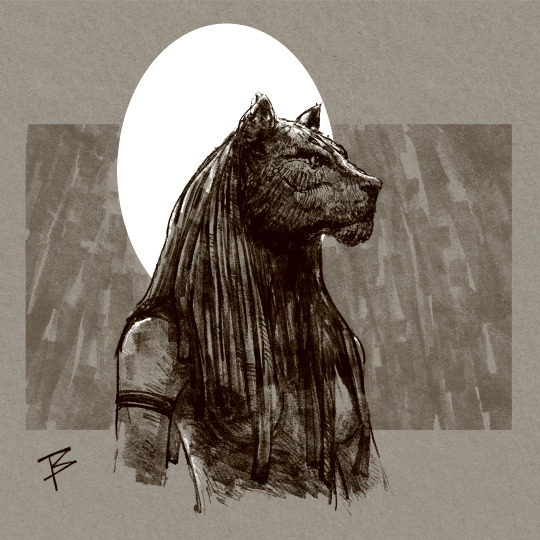
The Egyptian goddess Sakhmet. Drawn for Creatuanary.
#goddess#cat#egyptian gods#ancient egypt#egyptology#Creatuanary#art#my artwork#illustration#fantasy art#ancient religion#sakhmet
207 notes
·
View notes
Text
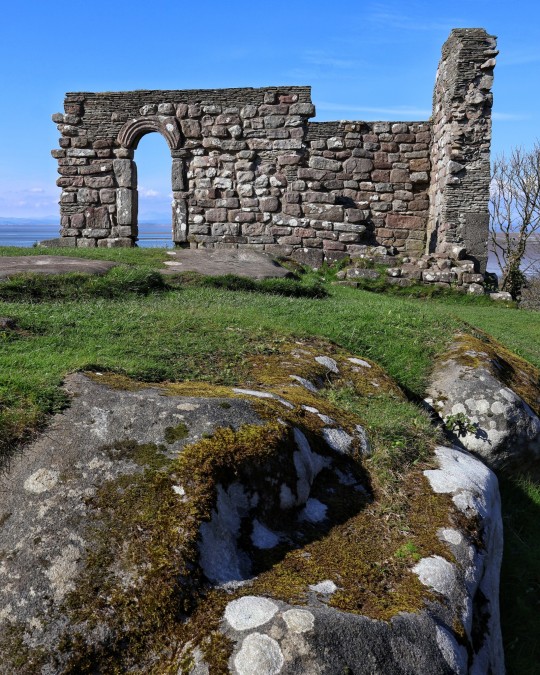

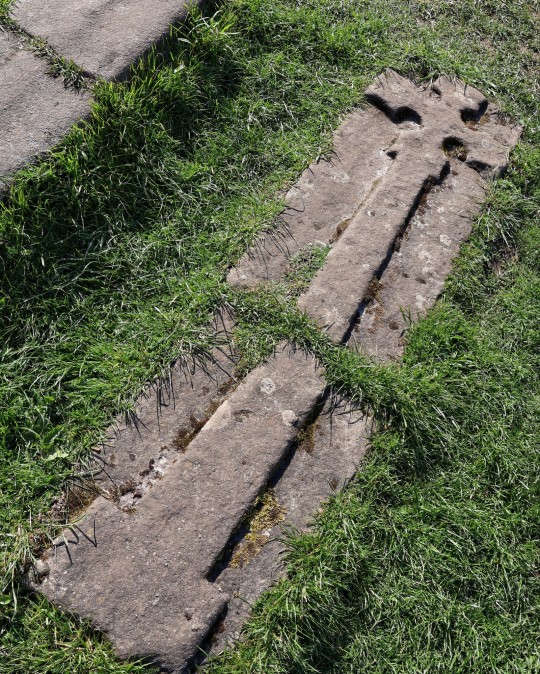

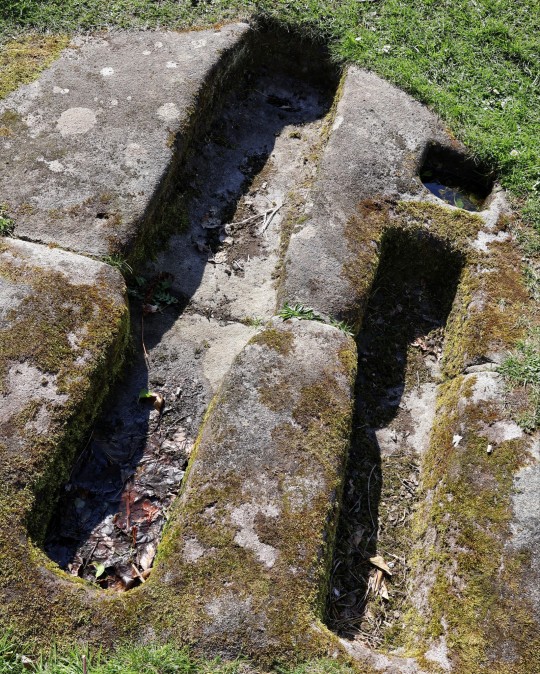





St. Patricks 8th Century CE Chapel And Stone Graves, Heysham, Lancashire
#ancient sites#ancient living#ancient beliefs#ancient religion#archaeology#graves#stonework#landscape#coastline#wild places#early religion#early church#Lancashire#St Patricks Chapel
177 notes
·
View notes
Text
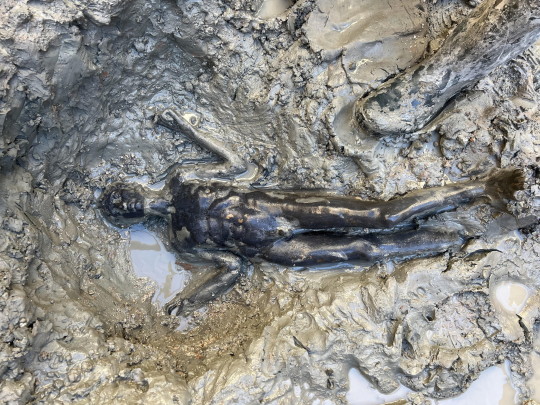


One of the 24 statues discovered last year in the mud of the remains of the Etruscan-Roman thermal spa and sanctuary in San Casciano dei Bagni. As attested by a large number of votive offerings, the ancients believed in the healing power of the water here. The statue above had the name Marcius Grabillo inscribed into his thigh and because of his thin limbs archaeologists think he suffered from a bone disease and nicknamed him "The Scrawny Boy".
#etruscans#etruscan history#ancient culture#ancient history#ancient rome#ancient art#ancient civilisations#etruria#statue#bronze statue#ancient religion#san casciano
56 notes
·
View notes
Text
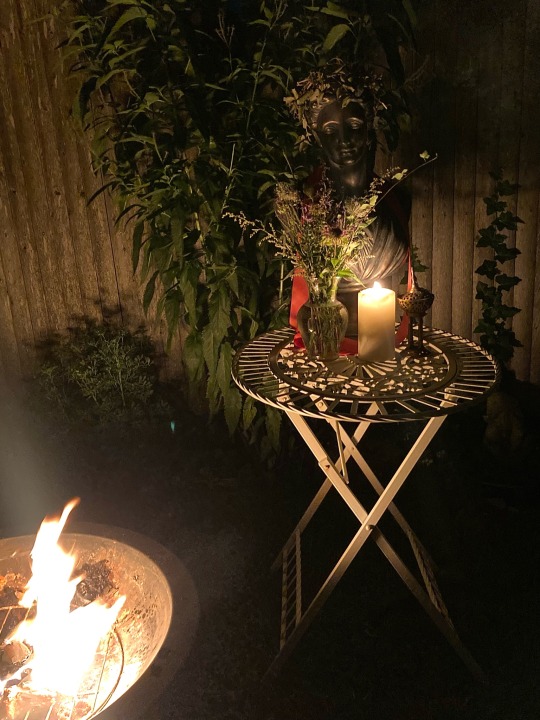
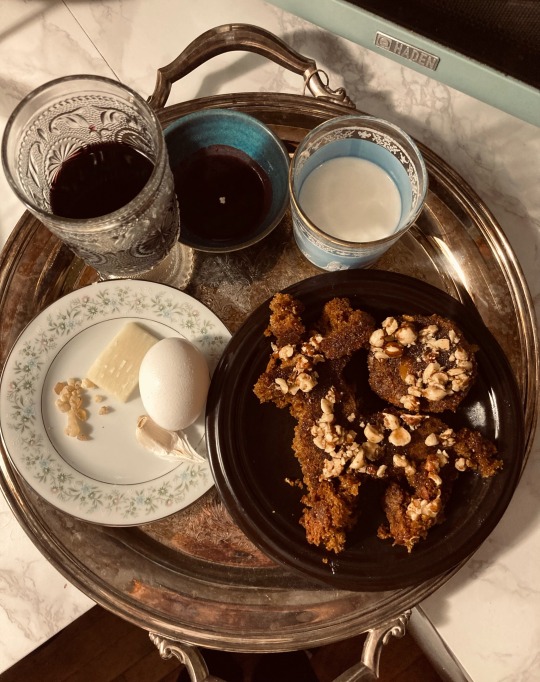
Another lovely Nemoralia; the first time I've celebrated on a blue moon. Clearly I'm a little behind on my posting.
It was lovely to see so many people spending time with the moon that night in their own personal ways.
🌕
🦌
🔥
#Nemoralia#diana#polytheism#August#ritual#Roman#Roman polytheism#ancient religion#religion#moon#magic
28 notes
·
View notes
Text
So who is Baal?
Baal or Baʻal, was a title and honorific meaning 'owner', 'lord' in the Northwest Semitic languages spoken in the Levant during antiquity.
Baal is a God of fertility, weather, rain, wind, lightning, seasons, war, sailors and so on.
Baal worship is also called Baalism.

Solid cast bronze of a votive figurine representing the god Baal discovered at Tel Megiddo, dating to the mid-2nd millennium BC.
His holy symbols are bull, ram and thunderbolt.
Baal was worshipped in ancient Syria, especially Halab, near, around and at Ugarit, Canaan, North Africa and Middle Kingdom of Egypt.
Baʿal is well-attested in surviving inscriptions and was popular in theophoric names throughout the Levant but he is usually mentioned along with other gods, "his own field of action being seldom defined". Nonetheless, Ugaritic records show him as a weather god, with particular power over lightning, wind, rain, and fertility. The dry summers of the area were explained as Baʿal's time in the underworld and his return in autumn was said to cause the storms which revived the land. Thus, the worship of Baʿal in Canaan—where he eventually supplanted El as the leader of the gods and patron of kingship—was connected to the regions' dependence on rainfall for its agriculture, unlike Egypt and Mesopotamia, which focused on irrigation from their major rivers. Anxiety about the availability of water for crops and trees increased the importance of his cult, which focused attention on his role as a rain god. He was also called upon during battle, showing that he was thought to intervene actively in the world of man, unlike the more aloof El. The Lebanese city of Baalbeck was named after Baal.
The Baʿal of Ugarit was the epithet of Hadad but as the time passed, the epithet became the god's name while Hadad became the epithet. Baʿal was usually said to be the son of Dagan, but appears as one of the sons of El in Ugaritic sources. Both Baʿal and El were associated with the bull in Ugaritic texts, as it symbolized both strength and fertility. He held special enmity against snakes, both on their own and as representatives of Yammu (lit. "Sea"), the Canaanite sea god and river god. He fought the Tannin (Tunnanu), the "Twisted Serpent" (Bṭn ʿqltn), "Lotan the Fugitive Serpent" (Ltn Bṭn Brḥ, the biblical Leviathan), and the "Mighty One with Seven Heads" (Šlyṭ D.šbʿt Rašm). Baʿal's conflict with Yammu is now generally regarded as the prototype of the vision recorded in the 7th chapter of the biblicalBook of Daniel. As vanquisher of the sea, Baʿal was regarded by the Canaanites and Phoenicians as the patron of sailors and sea-going merchants. As vanquisher of Mot, the Canaanite death god, he was known as Baʿal Rāpiʾuma (Bʿl Rpu) and regarded as the leader of the Rephaim (Rpum), the ancestral spirits, particularly those of ruling dynasties.
From Canaan, worship of Baʿal spread to Egypt by the Middle Kingdom and throughout the Mediterranean following the waves of Phoenician colonization in the early 1st millennium BCE. He was described with diverse epithets and, before Ugarit was rediscovered, it was supposed that these referred to distinct local gods. However, as explained by Day, the texts at Ugarit revealed that they were considered "local manifestations of this particular deity, analogous to the local manifestations of the Virgin Mary in the Roman Catholic Church". In those inscriptions, he is frequently described as "Victorious Baʿal" (Aliyn or ẢlỈyn Baʿal), "Mightiest one" (Aliy or ʿAly) or "Mightiest of the Heroes" (Aliy Qrdm), "The Powerful One" (Dmrn), and in his role as patron of the city "Baʿal of Ugarit" (Baʿal Ugarit). As Baʿal Zaphon (Baʿal Ṣapunu), he was particularly associated with his palace atop Jebel Aqra (the ancient Mount Ṣapānu and classical Mons Casius). He is also mentioned as "Winged Baʿal" (Bʿl Knp) and "Baʿal of the Arrows" (Bʿl Ḥẓ). Phoenician and Aramaic inscriptions describe "Baʿal of the Mace" (Bʿl Krntryš), "Baʿal of the Lebanon" (Bʿl Lbnn), "Baʿal of Sidon" (Bʿl Ṣdn), Bʿl Ṣmd, "Baʿal of the Heavens" (Baʿal Shamem or Shamayin), Baʿal ʾAddir (Bʿl ʾdr), Baʿal Hammon (Baʿal Ḥamon), Bʿl Mgnm.
The epithet Hammon is obscure. Most often, it is connected with the NW Semitic ḥammān ("brazier") and associated with a role as a sun god. Renan and Gibson linked it to Hammon (modern Umm el-‘Amed between Tyre in Lebanon and Acre in Israel) and Cross and Lipiński to Haman or Khamōn, the classical Mount Amanus and modern Nur Mountains, which separate northern Syria from southeastern Cilicia.
The major source of our direct knowledge of this Canaanite deity comes from the Ras Shamra tablets, discovered in northern Syria in 1958, which record fragments of a mythological story known to scholars as the Baal Cycle. Here, he earns his position as the champion and ruler of the gods. The fragmentary text seems to indicate a feud between him and his father El as background. El chooses the fearsome sea god Yam to reign as king of the gods. Yam rules harshly, and the other deities cry out to Ashera, called Lady of the Sea, to aid. Ashera offers herself as a sacrifice if Yam will ease his grip on her children. He agrees, but Baal opposes such a scheme and boldly declares he will defeat Yam even though El declares that he must subject himself to Yam.
With the aid of magical weapons given to him by the divine craftsman Kothar-wa-Khasis, Baal defeats Yam and is declared victorious. He then builds a house on Mount Saphon, today known as Jebel al-Aqra. (This mountain, 1780 meters high, stands only 15 km north of the site of Ugarit, clearly visible from the city itself.)
Lo, also it is the time of His rain.
Baal sets the season,
And gives forth His voice from the clouds.
He flashes lightning to the earth.
As a house of cedars let Him complete it,
Or a house of bricks let Him erect it!
Let it be told to Aliyan Baal:
'The mountains will bring Thee much silver.
The hills, the choicest of gold;
The mines will bring Thee precious stones,
And build a house of silver and gold.
A house of lapis gems!'
However, the god of the underworld, Mot, soon lures Baal to his death, spelling ruin for the land. His sister Anat retrieves his body and begs Mot to revive him. When her pleas are rebuffed, Anat assaults Mot, ripping him to pieces and scattering his remains like fertilizer over the fields.
El, in the meantime, has had a dream in which fertility returned to the land, suggesting that Baal was not indeed dead. Eventually he is restored. However, Mot too has revived and mounts a new attack against him.
They shake each other like Gemar-beasts,
Mavet [Mot] is strong, Baal is strong.
They gore each other like buffaloes,
Mavet is strong, Baal is strong.
They bite like serpents,
Mavet is strong, Baal is strong.
They kick like racing beasts,
Mavet is down. Baal is down.
After this titanic battle, neither side has completely prevailed. Knowing that the other gods now support Baal and fearing El's wrath, Mot finally bows before him, leaving him in possession of the land and the undisputed regent of the gods.
Baal is thus the archetypal fertility deity. His death signals drought and his resurrection, and brings both rain and new life. He is also the vanquisher of death. His role as a maker of rain would be particularly important in the relatively arid area of Palestine, where no mighty river such as the Euphrates or the Nile existed.
#baal#baal deity#baalism#canaanite gods#canaan#ancient history#ancient gods#history#ancient god#spiritual#deity#deities#religious#religion#religia#ancient religion#ancient world#gods#myth#mythos#ancient myths#mythology#mythology and folklore#myths#Canaanite religion#world religions#world history#ancient mythology
11 notes
·
View notes
Text
“ What land should I flee to?
Where should I go to flee?
From my family and from my clan
They banish me.
The community to which
I belong has not satisfied me
Nor have [the rulers] of the country.
How, Thee, can I satisfy, O Mazda Ahura? ” (Yasna 46.1)
Zarathustra, prophet of Zoroastrianism, after his vision that monotheism must be the only true god, debated all those among the priestly class and won in each case, but the king still wanted to throw him in prison. Around this time, he wrote these lines. Only some time later, after a private audience with the King, did the King come to understand his ideas, seeing that the priestly classes main concern was a threat to their power, and he changed his mind, granting him his life.
#zoro#zoroaster#zarathustra#persian#iran#persia#history#religion#religious history#archeology#ancient history#ancient religion#zoroastrianism#religious studies#monotheism#spirituality#quotes#literature#interesting#facts
20 notes
·
View notes
Text
Because so many students approach Greek religion through a class in Classical mythology, the importance of Greek deities tends to be correlated with their prominence in the written sources. Athena is clearly a powerful, important deity, as is Zeus. Hestia, by contrast, appears to be irrelevant, and Hera is just some jealous bitch. It is only by considering the non-literary evidence that one gets an appreciation of such deities’ true importance in Greek religion. For example, as the goddess of the hearth, Hestia is the core of the household, the core of the polis, the goddess who admits new members to both, who extends her reach to bind daughter colonies to mother cities, and in whose domain all burnt sacrifices and most libations must take place.
Stephanie Budin, Artemis
72 notes
·
View notes